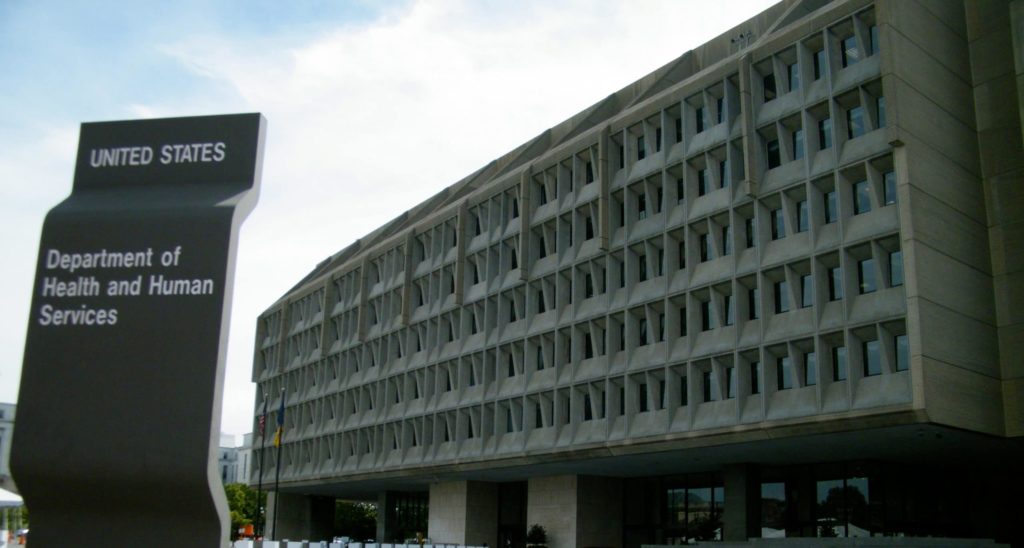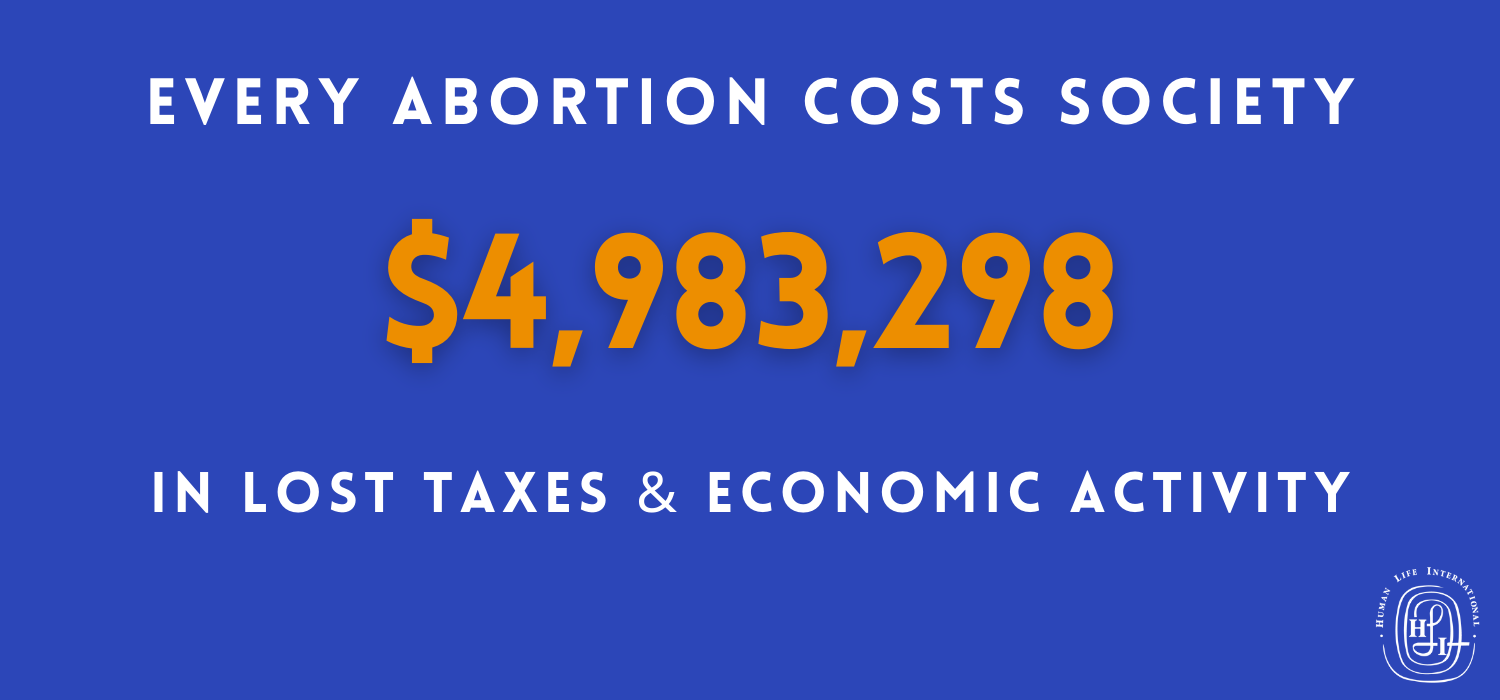By Brian Clowes, PhD
Supporters of abortion tend to lack foresight and misunderstand human nature. These defects inevitably lead to many cases of the “law of unintended consequences.”
One example of this lack of foresight is the claim that when the government pays for a poor woman’s abortion, it saves money by avoiding delivery and welfare costs. In fact, this is one of the most common arguments offered by pro‑abortionists in support of Medicaid funding of abortion.

The Pro-Abortion Argument
Essentially, the argument goes like this: it saves the country (and taxpayers) money, in the long run, to pay for an abortion instead of having to pay for the child to be on welfare after birth.
In support of this belief, pro-abortionists grossly exaggerate the costs incurred by a child on welfare. They began using this tactic in their battle against the Hyde Amendment, which bans most federal funding of abortion. Senator Charles H. Percy [R.‑Il.] testified, “If we can avoid a $100,000 cost for a $200 [abortion] investment ― and make a humanitarian investment at the same time ― what sense does it make to say, ‘We cannot afford $200 for this expenditure [an abortion]?’”1
This utilitarian thinking has continued for decades, with Baltimore Planned Parenthood CEO John Nugent saying in 2010:
A first trimester abortion is $300 to $450. But if the gestational age is higher you’re paying for a surgical suite. That’s why the insurance companies think they should be offering it [abortion]. It’s cheaper to terminate an unwanted pregnancy rather than taking it to term.
In this manner, pro-abortionists argue that abortion is a smart financial investment for taxpayers.
Children Benefit a Taxpaying Society
Actually, research demonstrates that killing people makes society poorer, not richer:
https://www.youtube.com/embed/KUY4ztwIVfA?feature=oembed
Obviously, an abortion does indeed cost much less than delivery and care for a baby, but the pro-abortion view is extremely short-sighted and completely neglects the future benefits to society provided by a child over his or her lifetime. Here are numbers to prove it:
- To begin with, pro-abortionists tend to assume that welfare children will be “on the dole” until they are eighteen. However, less than 5% of all children born into welfare families will remain on welfare until they are adults. Additionally, the average period of welfare dependency for a child is just two years.2
- A first-trimester Medicaid abortion currently costs about $508. By comparison, the cost of all kinds of public assistance for a child, including prenatal care, delivery, and postnatal care, and two years of all types of public assistance for the child is about $23,936.3 So, at first glance, abortion seems to be a very good financial deal indeed for the long-suffering taxpayer. But hold it ― not so fast!
What about the future benefits that a child generates during his or her lifetime?
- The federal, state, and local taxes paid by a child over their lifetime amount to about $1,135,271.4
- Pro-abortionists consider only the short-term benefits to the government, which is the difference between the cost of caring for a child and the cost of an abortion, or $22,300 – $515 = $21,785. But the long-term benefit to the government of paying for the child’s delivery and care is ($1,135,271 – $22,300), or $1,112,971. In other words, the government pays an average of $22,300 and gets $1,112,971 back.
- This means that there is a benefit-cost ratio of $50.90 received for every $1 the government spends when a child is saved and cared for. That is a very good deal indeed.
But this is not the only part of the equation. We must also consider that each person continuously generates wealth during his working career and consumes goods and services that help support the livelihoods of many other people. Through this, tax revenue is also generated through corporate taxes, sales tax, and more.
- Based on per capita GDP and average life expectancy, each person generates an average of about $5,007,234 in economic activity over his lifetime.
- By subtracting the earlier calculated cost of paying for a child’s delivery and care from this number, we see that each person aborted results in a total loss of around $4,983,298.
For every abortion, society loses out on nearly five million dollars in total economic activity.
For every dollar spent on abortion, society loses around $50.90 in tax revenue and more than $9800 in economic activity.

The Racism of the Pro-Abortion Argument
Knowing this, one can wonder if those who claim that abortion saves money might have another motive. In fact, there may well be. Time and again leaders of the pro-abortion movement reveal naked racism behind this argument. As notorious California abortionist Edward Allred said:
I would do free abortions in Mexico to stem the new influx of Hispanic immigrants. Their lack of respect for democracy and social order is frightening…. When a sullen black woman of 17 or 18 can decide to have a baby and get welfare and food stamps and become a burden to all of us, it’s time to stop. In parts of South Los Angeles, having babies for welfare is the only industry these people have.5
Of course, none of this is news, and abortion is not the only weapon targeting poor women in the United States in the name of cost-cutting. Take Norplant, a contraceptive implant that would later be banned by the FDA due to the massive harm it caused women. Donald Kimelman of the Philadelphia Inquirer revealed the true goal of our domestic population controllers in a 1990 article ominously entitled “Poverty and Norplant: Can Contraception Reduce the Underclass?” He writes:
As we read these two stories [about Norplant and black poverty], we asked ourselves: Dare we mention them in the same breath? To do so might be considered deplorably insensitive, perhaps raising the specter of eugenics. But it would be worse to avoid drawing the logical conclusion that foolproof contraception could be invaluable in breaking the cycle of inner-city poverty ― one of America’s greatest challenges.
Kimelman went on to suggest that welfare mothers could be implanted with Norplant for free and perhaps receive increased welfare benefits as a reward.
It seems reasonable to ask why, if Kimelman was truly concerned about poverty in general, did he not also recommend the use of Norplant for poor white women? Others asked the same question.
Vanessa Williams, president of the Philadelphia chapter of the National Association of Black Journalists, called Kimelman’s article “A tacit endorsement of slow genocide.”6 Four days after Kimelman’s article, Inquirer columnist Steve Lopez sarcastically suggested that contraception would not reduce the underclass quite as fast as “just shooting them.”
The Inquirer quickly apologized for Kimelman’s article after a wave of complaints. But the racist and eugenicist thinking of many of those who want to “help” poor women had been exposed once again.

Final Thoughts
Taxpayer-funded abortions are not fiscally responsible, and the motivation behind economic arguments for it are often racially motivated.
Abortion does not save money, not for the government, nor for society as a whole.
Endnotes
[1] July 29, 1977 testimony by Charles H. Percy [R.‑Il.] against the Hyde Amendment, 95th Congress Congressional Record of that date.
[2] Greg J. Duncan. Years of Poverty, Years of Plenty [Detroit: University of Michigan Press], 1984, pages 77 and 90; Child Trends Data Bank.
“Child Recipients of Welfare (AFDC/TANF): Indicators on Children and Youth,” July 2012. Page 2 of this publication notes that children can only receive welfare benefits for a maximum of five years.
[3] The cost of the four main forms of child welfare are Medicaid, SNAP, TANF, and WIC. On average, these programs were found to cost about $3,556 for one year, $216 for one month, $447 for one month, and $38 for one month respectively. Assuming two years of welfare benefits produces the following equation: ($3,556 x 2) + ($216 x 24) + ($447 x 24) + ($38 x 24) = $23,936.
[4] Budget summaries from state and federal Governments show $1,718,000,000,000 in individual federal income taxes, $1,243,000,000,000 in payroll taxes, $230,000,000,000 in corporate income taxes, and $1,578,000,000,000 in state and local taxes, amounting to around $4,769,000,000,000 a year. Per capita, that’s $4,769,000,000,000/331,000,000 or $14,407 a year, which, added to the average person’s lifespan (78.8), is $1,135,271.
[5] Abortionist Edward Allred, quoted in the San Diego Union, October 12, 1980.
[6] Clarence Page. “Hope Best Way to Fight Poverty.” The Oregonian, December 31, 1990, page C5.
This article has been reprinted with permission and can be found at hli.org/resources/abortion-reduce-welfare-costs.